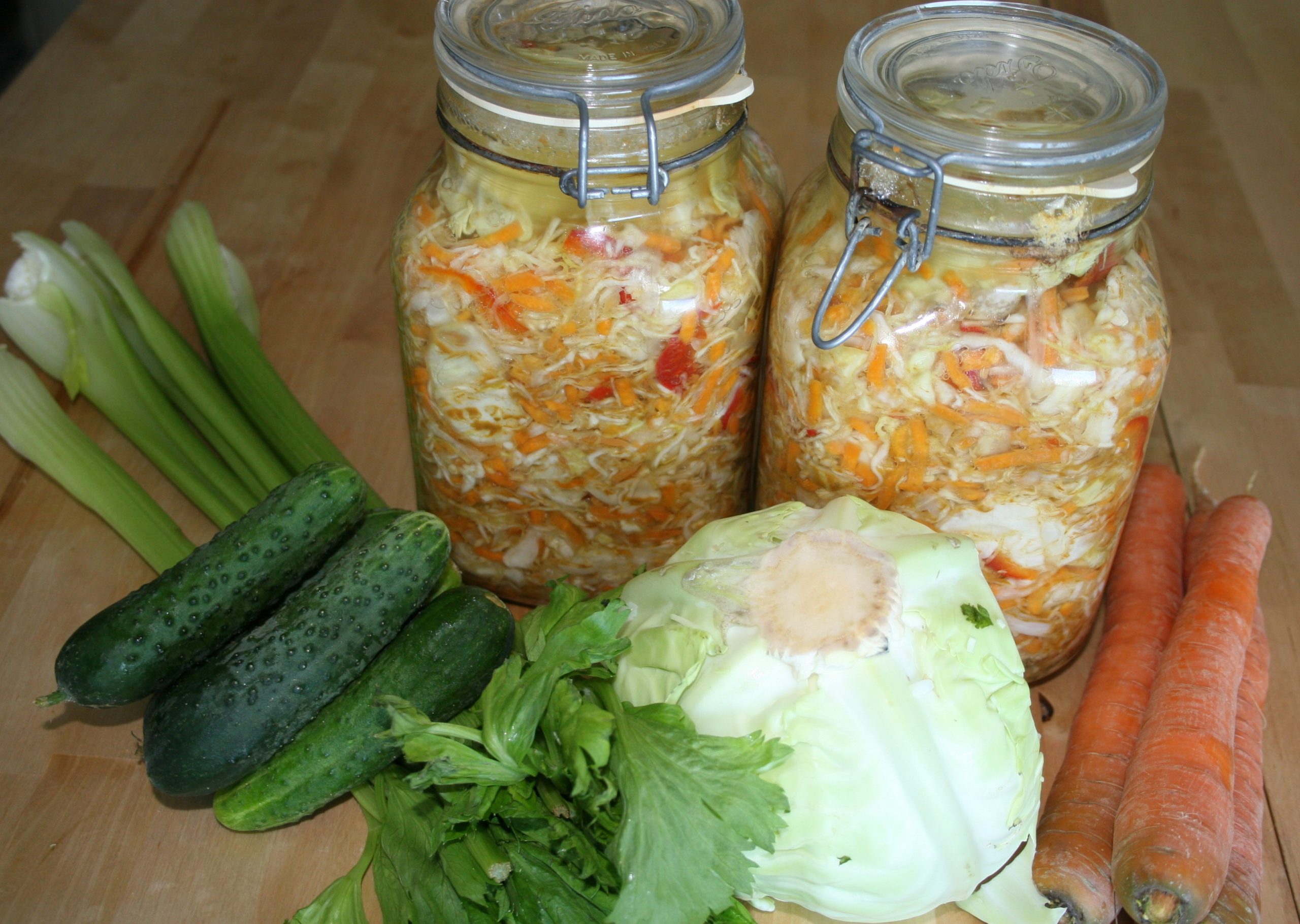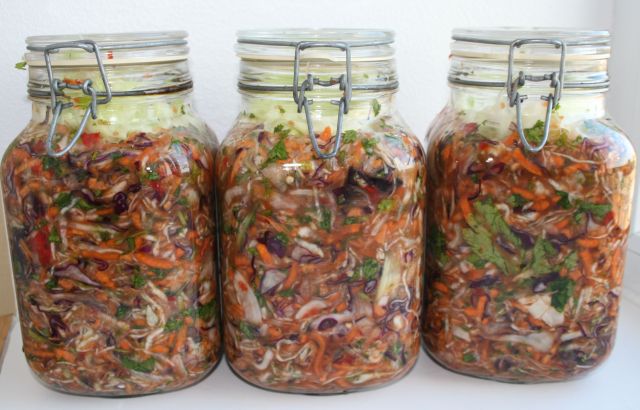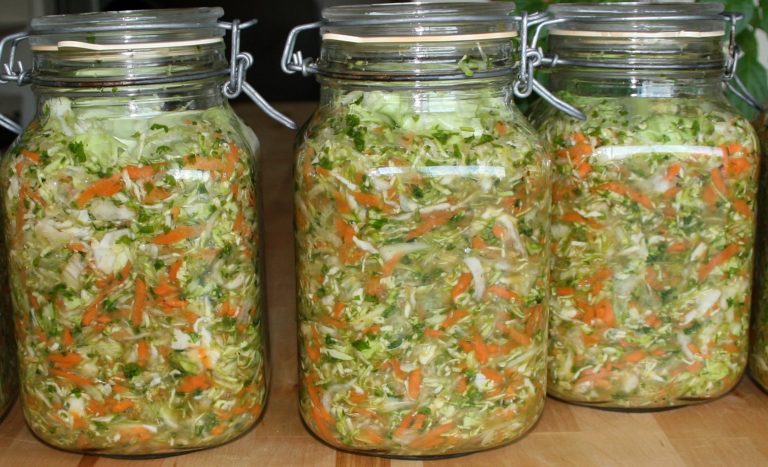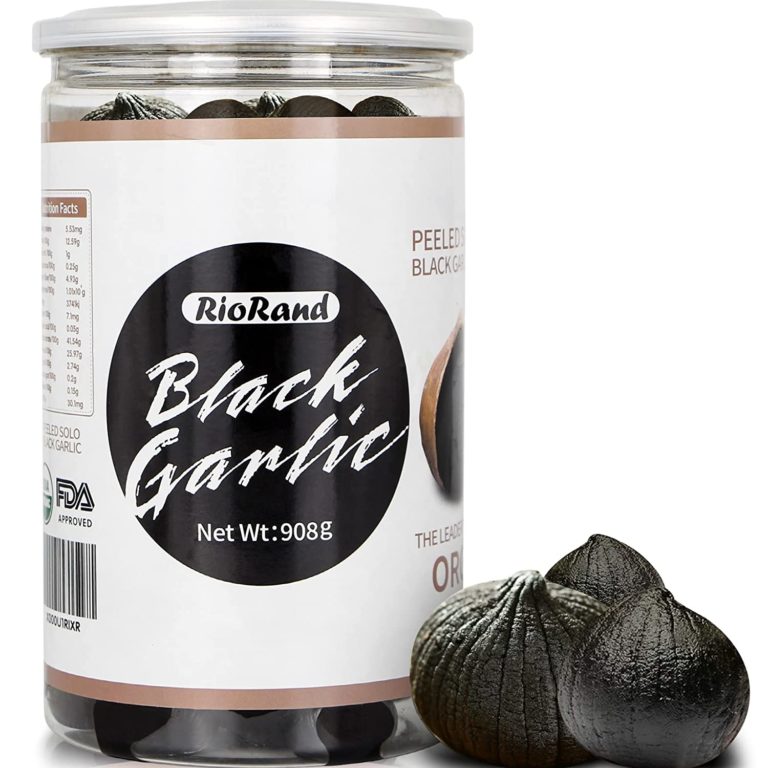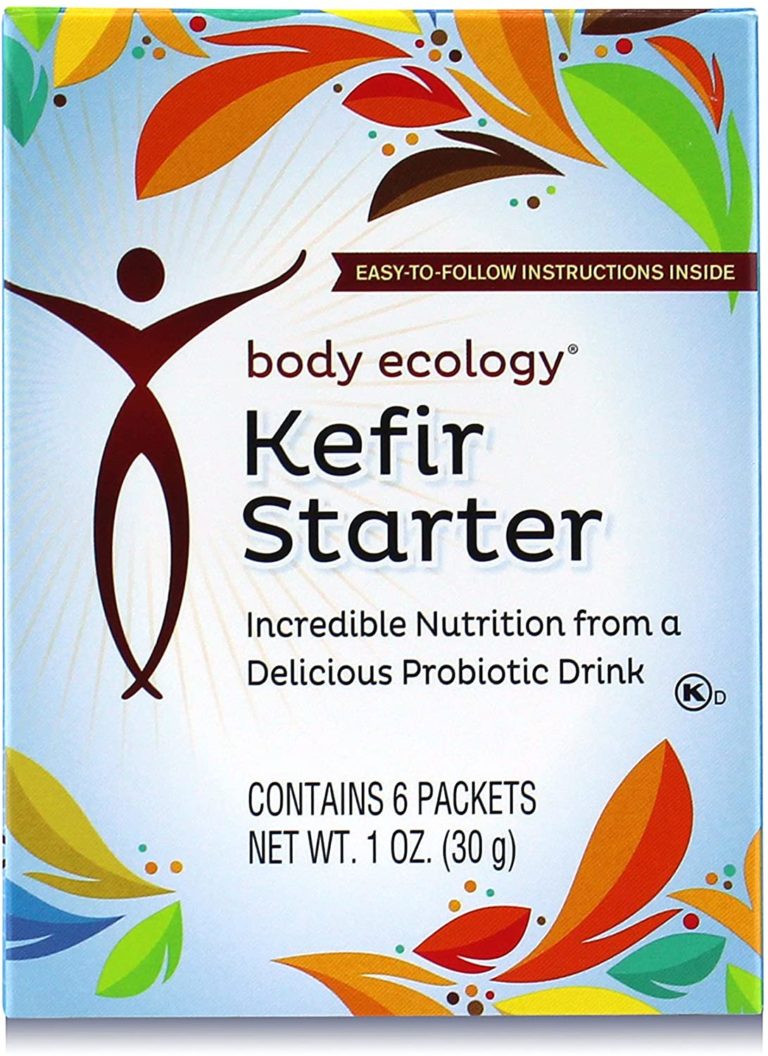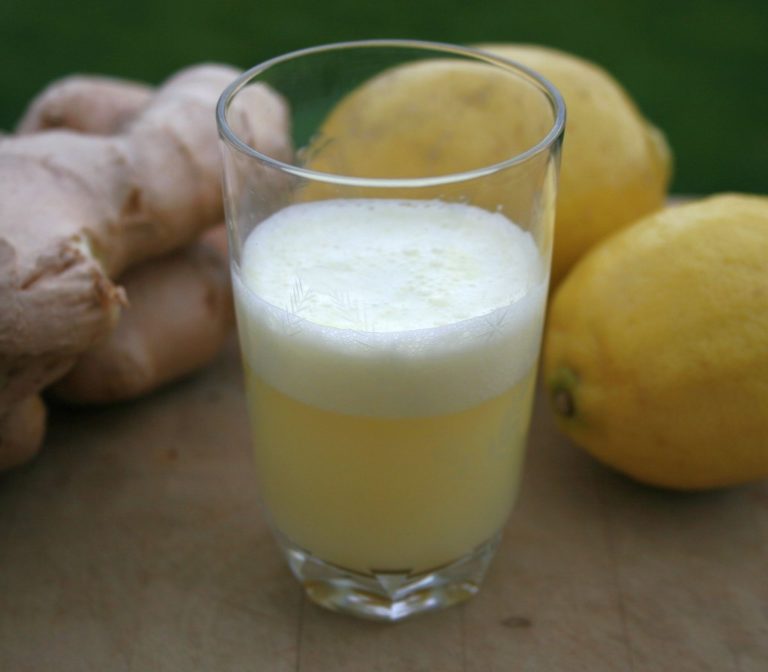How to Ferment Vegetables | What You Need to Know to Succeed
Learning how to ferment vegetables at home requires a little insight into the world of humble microorganisms. These creatures literary chew the food for you. During this process they turn nutrients more bioavailable and create new ones. Your job when fermenting is to keep these microorganisms happy and let them produce natto, kimchi, fermented garlic, or some other delicious food.
How can you do this?
What is lacto-fermentation?
Lacto-fermentation is a natural, biological process involving friendly microorganisms that change the makeup of vegetables, dairy, and bread. During this process, probiotic bacteria produce lactic acid which is responsible for the familiar fresh, acidic taste. Fermented food is easy for the body to digest and assimilate because fermented foo has already been “chewed and digested” by good bacteria.
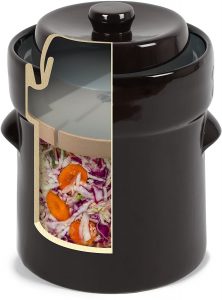
(Amazon.com link)
Fermented food has already been chewed and digested by microorganism.
What does the fermentation process accomplish? Fermenting vegetables produces enzymes, vitamin K2, lactic acid, hydrogen peroxide, benzoic acid, and other potent compounds.
Fermentation also…
- prevents the growth of harmful microorganisms;
- promotes the growth of beneficial bacteria;
- increases bioavailability of nutrients;
- acts as a natural preservative;
- makes food easier to digest.
Summary: Preparing fermented vegetables at home is more cost-effective than buying probiotic supplements. Food processed by beneficial microorganisms turns more bioavailable and supports your body’s intricate eco system of microorganisms.
How to ferment vegetables: Three requirements
The following principles explain how to ferment vegetables. Other techniques are used to ferment dairy and to prepare sourdough bread.
Though all three requirement below are important, the first two are critical:
- Absence of oxygen
- Correct temperature
- Correct salt concentration
When fermentation is complete, the jars should be stored in a cool place like a cellar or fridge. Fermented vegetables often acquire a more complex and tangy taste when stored for a while.
You might also like to read:
1. Oxygen
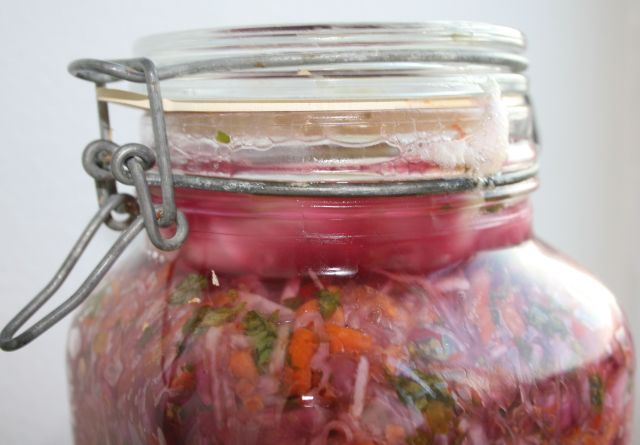
Lacto-fermentation works best in the absence of oxygen. Therefore, using air-tight jars is important (Mason jars are good). However, during the first few days of fermentation pressure builds in the jars so don’t screw the lids on too tight. You can also open the lid for a second now and then to let gas out. After fermentation, lids should be screwed on tight.
As seen in the image, I use jars with a rubber seal that allows excess gas to leak out but no oxygen is allowed in. When fermentations starts, brine often might leak out which is normal.
Absence of oxygen is also the reason why the vegetables should be submerged in brine at all times. So add enough water or juice so it completely covers the veggies. Add a cabbage leaf on top of each jar which help to keep the veggies in the brine. Discard the leaf when you consume the vegetables.
2. Temperature
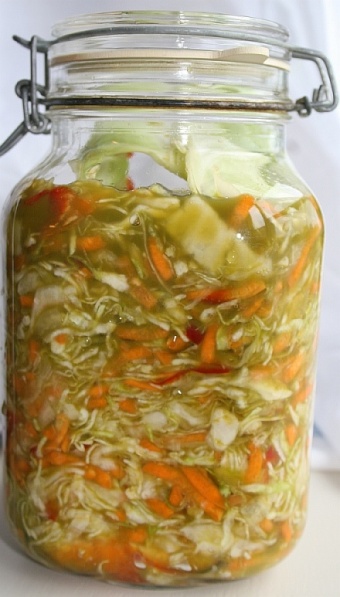
Probiotic microorganisms are most productive at temperatures between 64 to 72 degrees (18-22º C). If it’s cooler, it might require more time to ferment. However, many problems occur when it’s too warm. This can be a challenge when preparing fermented vegetables at home.
For example, once I put the jars to ferment in a cabinet close to the stove which ruined my entire batch because the temperature in the cabinet became too high when we used the stove.
Consider a few facts:
- Some bacteria like it cooler, as Leuconostoc species with an optimum of 64 up to 72 degrees (18 to 22ºC)
- A temperature around 72-74 degrees (22-23ºC) favors lactobacillus species. (fermented vegetables, sauerkraut, fermented dairy)
- The warmer it gets, the higher the risk for mold and other harmful microorganisms.
How to ferment vegetables in a warm climate.
Summary: Correct temperature is essential for your batch to turn out well. The vegetables tend to become more mushy when it’s too warm so stick to a range between 64-72 F (18-22º C). The risk of problems increases above 75F (24º C).
3. Salt concentration
A concentration between 1-3% is a good range. Lactic acid producing bacteria has a high salt tolerance, as for example the Leuconostoc bacterium that often initiates fermentation in fermented vegetables.
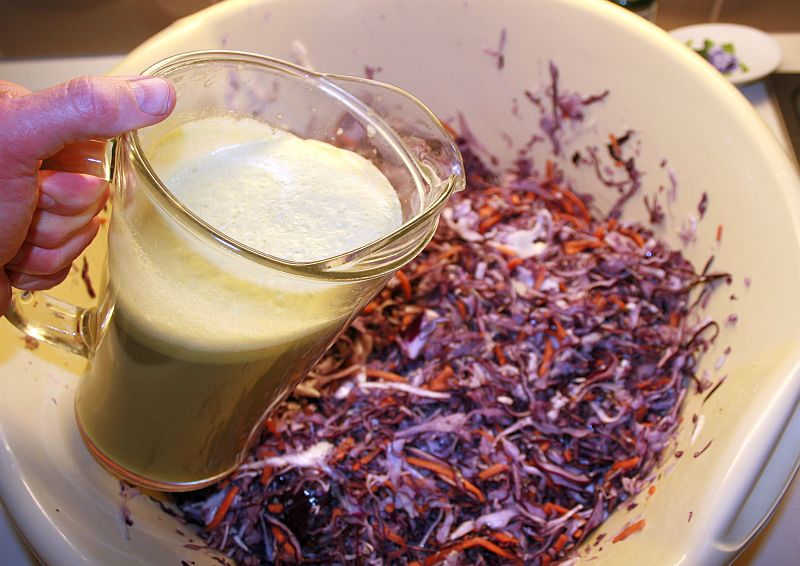
How much salt to add:
- Add 1-3 tablespoons for every medium cabbage head or equivalent amount of other vegetables. Mix the salt with the shredded vegetables.
- I use Himalayan or sea salt in all my recipes.
Traditionally, when fermenting vegetables at home no culture starters were not used. It was done by the microorganisms that are naturally present on raw vegetables. This is also called wild or natural fermentation.
Much salt has traditionally been used to preserve the veggies longer and to prevent harmful microorganisms to develop. Wild fermentation works well if you know what you are doing. However, there are many advantages with using a good starter culture.
Summary: Adding salt promotes crunchiness, improves the taste, protects the veggies from unwanted microorganisms, and helps preserve the product longer. Fermentation often works better when salt is added, especially in wild fermentation.
How to ferment vegetables without a starter
This is briefly what happens during a wild or natural fermentation. Different microorganisms are active in stages to produce the tart taste. Certain species initiates fermentation, other species continues this chain-reaction as the environment becomes more and more acid.
Here are the three main phases of wild or natural fermentation
PHASE ONE
The first phase can be called the “break-down” step. It lasts only a few days. You see bubbles and brine is leaking out. During this phase, most harmful microorganisms are destroyed by beneficial microorganisms and the batch slowly turns increasingly sour as beneficial microorganisms take control.
PHASE TWO
The beneficial microorganisms are now in complete control of the batch. They consume sugars contained in the vegetables. Lactose, glucose, fructose, and sucrose are all converted by the bacteria into lactic acid, enzymes, gas, and many other substances. This process gradually increases bioavailability of fermented vegetables.
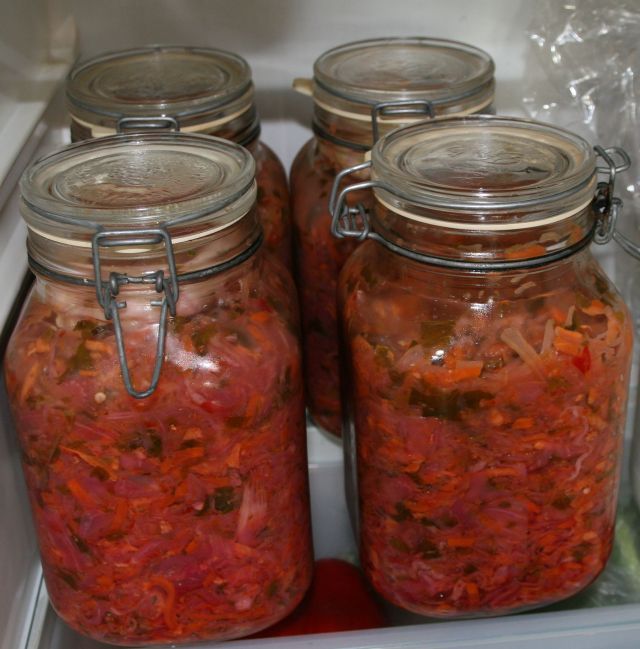
The level of acidity increases slowly, thus creating the familiar tart, tangy flavor. The acidity preserves the vegetables since most harmful bacteria can’t survive. The more lactic acid present, the more acidic the flavor.
When stored, more tart and complex aromas are created
PHASE THREE
Storing the jars in a cool place slows down fermentation. However, the beneficial microorganisms are still alive, slowly consuming carbohydrates and producing more lactic acid. The microorganisms can stay alive in the jars for many months. The longer the jars are stored, the more tart and complex aromas are created.
How to prepare sauerkraut at home
Summary: Three main phases are involved in wild fermentation of vegetables. This is because different bacteria species are most productive in each of the three stages. One reason is that the increasingly acidic environment promotes certain species while suppressing others.
Fermentation FAQ
Unwanted microorganisms can disturb fermentation by producing butyric acid and other bad-smelling substances. Because of this, the final product may develop a bad taste and soft texture. Another common problem is mold that can ruin the batch.
When fermenting vegetables became industrialized, many adjustments were made in the process to render the final product more uniform. Many commercial products contain very little, if any, beneficial bacteria. Homemade fermented vegetables the traditional way can contain trillions or microorganisms in a few tablespoons.
